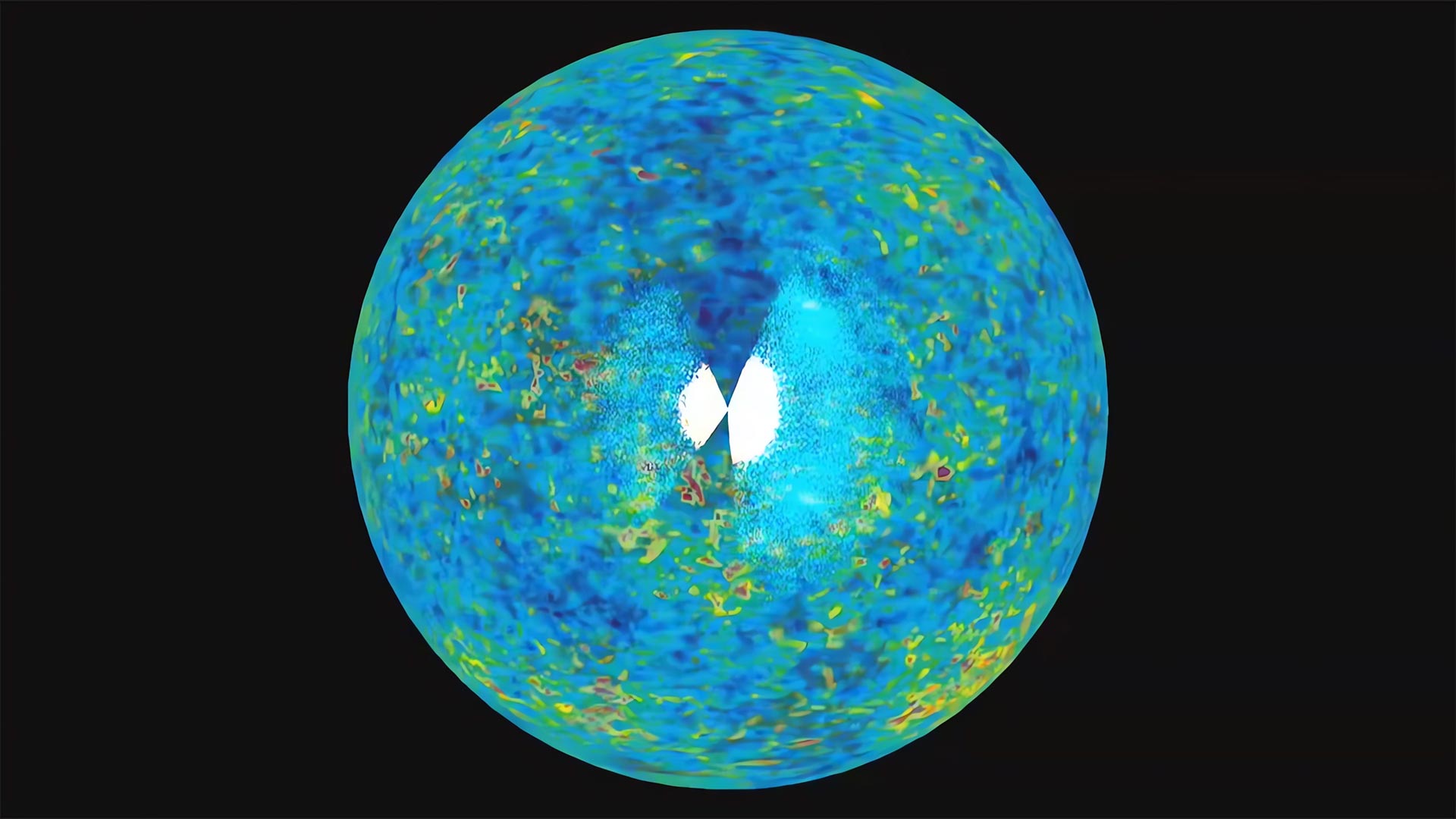
Naukowcy wykorzystali symulacje do zbadania kosmicznej sieci, włóknistego wzoru galaktyk znalezionych w dużych skalach w całym wszechświecie. Traktując rozmieszczenie galaktyk jako zbiór punktów i stosując techniki matematyczne opracowane dla materiałoznawstwa, zidentyfikowali względny nieład wszechświata i uzyskali lepsze zrozumienie jego podstawowej struktury. Źródło: NASA/University of Chicago oraz Adler Planetarium and Astronomy Museum
Wszechświat jest pełen galaktyk, które w dużych skalach wykazują włóknisty wzór, określany jako kosmiczna sieć. Ta heterogeniczna dystrybucja materii kosmicznej jest pod pewnymi względami jak jagody w cieście, gdzie materiał gromadzi się w pewnych obszarach, ale może go brakować w innych.
Opierając się na serii symulacji, naukowcy zaczęli badać heterogeniczną strukturę Wszechświata, traktując rozkład galaktyk jako zbiór punktów – jak pojedyncze cząsteczki materii, które tworzą materię – a nie jako rozkład ciągły. Ta technika umożliwiła zastosowanie matematyki opracowanej dla materiałoznawstwa do określenia względnego nieładu wszechświata, co pozwoliło lepiej zrozumieć jego podstawową strukturę.

Wizualizacja największych struktur we wszechświecie z Sloan Digital Sky Survey. Źródło: NASA/University of Chicago oraz Adler Planetarium and Astronomy Museum
„Odkryliśmy, że rozmieszczenie galaktyk we Wszechświecie bardzo różni się od fizycznych właściwości konwencjonalnych materiałów, które mają swój własny, unikalny podpis” – wyjaśnia Oliver Vilkox, współautor badania.
Ta praca jest obecnie publikowana w X fizyczny przeglądprowadzonej przez Salvatore Torquato, członka i częstego gościa Instytutu Studiów Zaawansowanych oraz profesora nauk przyrodniczych Louisa Bernarda z siedzibą w[{” attribute=””>Princeton University’s departments of chemistry and physics; and Oliver Philcox a visiting Ph.D. student at the Institute from September 2020 to August 2022, now a Junior Fellow in the Simons Society of Fellows, hosted at Columbia University.
Ta wizualizacja zapewnia widok 3D największych struktur we wszechświecie. Zaczyna się od danych z przeglądu Sloan Digital Sky i pomniejsza, aby ujawnić dane z WMAP. kredyt:[{” attribute=””>NASA/University of Chicago and Adler Planetarium and Astronomy Museum
The pair analyzed public simulation data generated by Princeton University and the Flatiron Institute. Each of the 1,000 simulations consists of a billion dark matter “particles,” whose clusters, formed by gravitational evolution, serve as a proxy for galaxies.
One of the main results of the paper concerns the correlations of pairs of galaxies that are topologically connected to one another by means of the pair-connectedness function. Based on this—and the array of other descriptors that arise in the theory of heterogeneous media—the research team showed that on the largest scales (on the order of several hundred megaparsecs), the universe approaches hyperuniformity, while on smaller scales (up to 10 megaparsecs) it becomes almost antihyperuniform and strongly inhomogeneous.

A section of the universe (black and white), with dark matter halos indicated by points and their associated large-scale topological structures indicated by colors. Credit: Philcox & Torquato; The Quijote Simulations
“The perceived shift between order and disorder depends largely on scale,” stated Torquato. “The pointillist technique of Georges Seurat in the painting A Sunday on La Grande Jatte (see image below) produces a similar visual effect; the work appears disordered when viewed up-close and highly ordered from afar. In terms of the universe, the degree of order and disorder is more subtle, as with a Rorschach inkblot test that can be interpreted in an infinite number of ways.”

“A Sunday on La Grande Jatte” by Georges Seurat.
Statistical tools, specifically nearest-neighbor distributions, clustering diagnostics, Poisson distributions, percolation thresholds, and the pair-connectedness function, allowed the researchers to develop a consistent and objective framework for measuring order. Therefore, their findings, while made in a cosmological context, translate to a number of other dynamical, physical systems.
This interdisciplinary work, combining the techniques of cosmology and condensed matter physics, has future implications for both fields. Beyond the distribution of galaxies, many other features of the universe can be explored with these tools, including cosmic voids and the ionized hydrogen bubbles that formed during the reionization phase of the universe. Conversely, the novel phenomena discovered about the universe may also provide insight into various material systems on Earth. The team recognizes that more work will be needed before these techniques can be applied to real data, but this work provides a strong proof-of-concept with significant potential.
Reference: “Disordered Heterogeneous Universe: Galaxy Distribution and Clustering across Length Scales” by Oliver H. E. Philcox and Salvatore Torquato, 14 March 2023, Physical Review X.
DOI: 10.1103/PhysRevX.13.011038

„Całkowity miłośnik kawy. Miłośnik podróży. Muzyczny ninja. Bekonowy kujon. Beeraholik.”







More Stories
Prognoza cukrzycy w Australii w 2024 r. | Wiadomości o Mirażu
„Gorąca sauna żabia” pomaga australijskim gatunkom w walce ze śmiercionośnym grzybem
Model sztucznej inteligencji poprawia reakcję pacjentów na leczenie raka